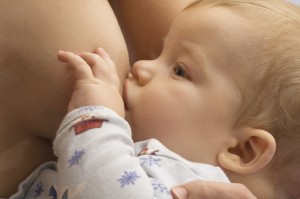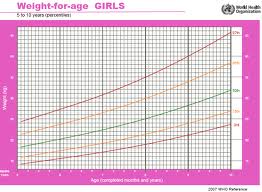 Babies don’t nurse just for food. This often comes as a surprise to parents, but babies go to the breast for many reasons. They’re hungry, thirsty, tired, hurt, overstimulated, bored, lonely, in the mood for cuddles, etc. All are equally valid reasons to nurse. Believing that babies only nurse because they are hungry can lead to problems if parents try to hold off feedings because “he can’t be hungry he just ate!”. I’m sure most of us have heard someone say “Don’t let your baby use you as a pacifier!”. My response to this is “I’m not pacifying, I’m mothering!” Pacifiers were invented to allow babies to satisfy their sucking needs when mom is not available, not the other way around. Mothers are not meant to nurse their babies only when a pacifier isn’t available!
Babies don’t nurse just for food. This often comes as a surprise to parents, but babies go to the breast for many reasons. They’re hungry, thirsty, tired, hurt, overstimulated, bored, lonely, in the mood for cuddles, etc. All are equally valid reasons to nurse. Believing that babies only nurse because they are hungry can lead to problems if parents try to hold off feedings because “he can’t be hungry he just ate!”. I’m sure most of us have heard someone say “Don’t let your baby use you as a pacifier!”. My response to this is “I’m not pacifying, I’m mothering!” Pacifiers were invented to allow babies to satisfy their sucking needs when mom is not available, not the other way around. Mothers are not meant to nurse their babies only when a pacifier isn’t available!
Rather than becoming “spoiled” as is commonly believed, research shows that babies who are held and nursed frequently, actually go on to be very outgoing and adventurous children. Babies’ first relationships set the tone for all future relationships in life. By responding to our babies’ needs quickly, consistently and with love, we teach our children that the world is a safe and wonderful place. This gives them the courage to go out and explore because they know that they have a safe and loving place to return to.
Breastfeeding is a relationship that is about much more than just food. The whole experience of being close to mom, having skin-to-skin contact, smelling mom’s familiar scent, hearing her voice and seeing her face, receiving the comfort of warm milk, and the biologically specific components of human milk, all work together to provide the necessary environment for healthy growth and development of your baby.
I have heard people say that comfort nursing is bad because it teaches children to associate food with comfort, but breastfed babies aren’t thinking “I need comfort, so I need to eat”. They are thinking (or probably more accurately, feeling) “something’s not right, I need Mom”. Any milk they get while nursing is an added benefit, but what baby really wants and needs is the comfort and security of being close to mom. Research is showing us that babies who are not breastfed are more likely to be obese, and one theory as to why this is, is that breastfed babies have control over how much milk they take in, and they learn to eat only until they are full. For babies who are not being fed at the breast, someone else has control over the feeding, and bottle fed babies often end up taking in more milk than they really need/want. It is theorized that the overeating that bottle fed babies often experience can set the baby up for overeating later in life as well. There are also hormones present in breastmilk that help to control hunger and metabolism. These hormones are absent in infant formula.
Breastfeeding is the ultimate mothering tool. You can’t go wrong putting your baby back to breast even if he did eat only an hour ago. Your baby may not be looking for food, but rather the comfort and security that comes with breastfeeding. You’re not being a pacifier, and you’re not creating any bad habits, you’re responding to your baby’s needs. The only time that frequent nursing may be cause for concern is if your baby is not gaining weight appropriately, isn’t having lots of wet and dirty diapers, or consistently seems unsatisfied right after coming off the breast. If this is the case, it would be a good idea to follow up with an International Board Certified Lactation Consultant to determine if something else is going on.
 Another problem: what is a “normal weight” for a baby? Weight for age growth charts compare a child’s weight to other children of the same age, which really is not very useful. Is your baby healthier than mine because he weighs more or less than mine does? Of course not. All babies are different and someone has to be in the lowest percentile, just like someone has to be in the highest.
Another problem: what is a “normal weight” for a baby? Weight for age growth charts compare a child’s weight to other children of the same age, which really is not very useful. Is your baby healthier than mine because he weighs more or less than mine does? Of course not. All babies are different and someone has to be in the lowest percentile, just like someone has to be in the highest.